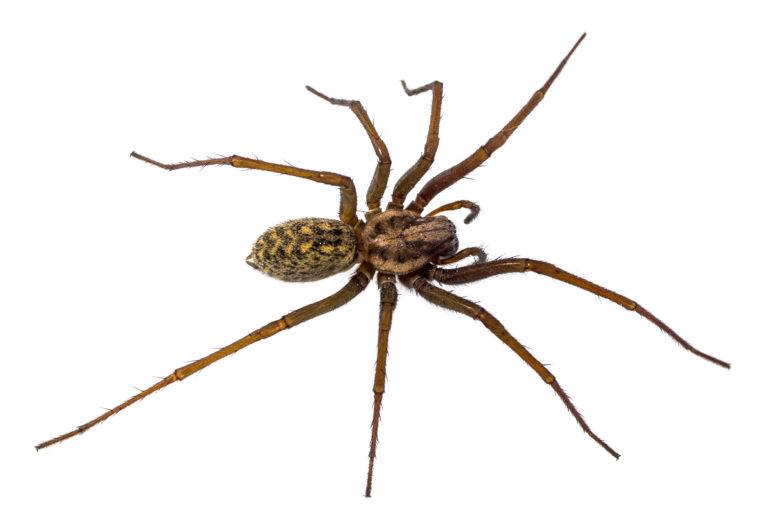
Though my street cred suffers every time I admit it, spiders scare the hell outta me. Oddly enough, however, I can rarely bring myself to kill them. I, as further detriment to any remaining street cred, am a biology geek. As such, I hold all spiders in too high regard to squash ’em. Instead, when I find one skulking around inside, I catch it and release it outside. But never fear, I know that my scruples are my own, and that most people are happy to at least kill hobo (and other venomous) spiders. With this in mind, you should know how to do it properly and effectively. Just because I don’t like doing it, doesn’t mean I don’t know how to do it. And believe me, I know how to kill spiders real good.
There are five spiders in the Tegeneria genus. The most notable of these is the hobo spider (Tegenaria agrestis), which has also been called, inaptly, the aggressive house spider. Due to their venomous bite, the information in this article focuses on hobo spiders. The suggested control methods, however, are the same for all house spider species.
Hobo Spider Identification
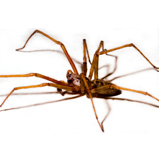 Brown with V-shaped patterns on abdomen, Solid brown legs, Hairy legs and back, 5/8 – 1¾ inches long (legs included), Long, prominent spinnerettes, Fast runners, Funnel-shaped webs, Nocturnal
Brown with V-shaped patterns on abdomen, Solid brown legs, Hairy legs and back, 5/8 – 1¾ inches long (legs included), Long, prominent spinnerettes, Fast runners, Funnel-shaped webs, Nocturnal
Hobo Spider Bite Symptoms (Tegenarism)
These bites are not often felt but the bite site reddens rapidly. The wound usually heals up in a few days. Sometimes, however, the bite site will blister and fill with puss. After about 24 hours, the blister pops and exposes an open sore/ulceration that may take months to heal. Other symptoms include:
- Muscular weakness
- Dizziness
- Disorientation
- Confusion
- Sweating
- Nausea
- Severe headache
- Joint pain
Best Ways to Get Rid of Hobo Spiders

Pick up all clutter.
The more crap you have lying around your house, the more places you have for hobo spiders and other pests (i.e., things spiders eat) to live and hide in. Get rid of magazine piles, newspapers, cardboard, etc. Keep your floors, especially areas near walls, clear. A clean bedroom is particularly important. Hobo spiders, especially in the fall when they’re out tryin’ to get some sweet lovin’, get into clothes and blankets lying on the floor. When these clothes and blankets get picked up, house spiders feel threatened, and you get yourself bitten.
The great thing about tidying up areas of clutter and junk is that you will also cut down on other pests that like a mess — ranging from mice to crickets to ants. It will be time well spent.
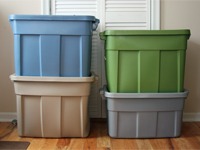
Improve storage habits.
After you pick up and dispose of clutter, start looking for items that can be stored or tossed. Do you really need those knick-knacks? Get rid of ’em. Do you really need to keep winter clothes out or on hangers? You’re just providing hobo spiders with shelter. Put these items into plastic bins with tight-fitting lids, like these Rubbermaid Storage Totes from Amazon. Also look at items you already have stored. If they’re in cardboard boxes, that’s a huge no-no. Spiders love cardboard boxes. Get more plastic totes and move your stored items into them. Finally, quit storing firewood indoors.

Change your slovenly ways.
One of the most important aspects of any pest control regimen is sanitation. If you leave dirty dishes lying around, don’t wipe counters, sweep, mop, or vacuum, you’re asking for pests. When pests come in to dine on messes, hobo spiders, who want to dine on the pests that are dining on messes, are sure to follow. So quit being a slob and clean up. Sweep, mop, vacuum, wipe, and wash every surface. Don’t forget cupboards, drawers, and pantries. Take garbage out regularly, and rinse out containers before throwing them in the recycling. No food debris = no insects, which = no spider food.
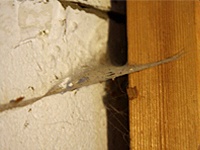
Destroy hobo spider hidey-holes.
Hobo spiderwebs are identified by their funnel-like shape. The funnel is usually built into a crack, hole, or crevice. This is where the hobo spider will be found. First kill the little jerk (use a broom, stick, or spray). Once it’s dead, remove the web and dead spider (wear gloves, just in case). If you sprayed, wait for it to dry and fill the spot with silicon caulk, keeping other hobo spiders from using the same hole. Once all spiders are dispatched, search your house for other spots that spiders might use, and caulk them.

Reduce moisture and humidity.
One of the main requirements for hobo spiders is moisture. To get rid of hobo spiders currently living in your home and keep others from coming in, reduce that moisture. Start by getting a few dehumidifiers. Place them in basements, closets, and rooms with little air flow. Something like the Eva-dry at Amazon may work, but you’ll want to probably get something a bit larger if you’re going whole-home instead of closet or bathroom. Keep doors to those “little air flow” rooms open and set up fans in them. Next, check all faucets for drips and pipes for leaks. If you find them, fix them. Once water pipes are in good repair, insulate them to control condensation.
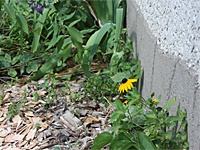
Make the outside perimeter of your house uninviting.
By doing so, it’ll be far less likely that hobo spiders will find their way indoors. Start by removing anything that provides shelter for them. Ideally, there should be at least a foot of clearance between your house and anything else. That includes any and all vegetation, wood piles, hose reels, shutters . . . anything. Once everything is cleared away, get rid of any mulch. Insects love mulch, and therefore, so do spiders. Finally, get rid of any debris piles in the yard (brush, leaves, rocks, etc.).
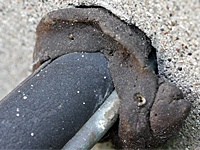
Exclude hobo spiders from your home.
Load your caulking gun with silicon caulk, walk slowly around your home, and fill any holes, cracks, and crevices you see. Pay special attention to areas around windows, doors, water spigots, electrical components such as lights and outlets, places where wires, cables, or conduits enter the home, corners of the house, and other areas where siding comes together. If there are cracks in the foundation, speak with a contractor and repair them. Repair holes in window screens, make sure vents have bug screens, and install weather stripping in windows and door sweeps on doors.
Purchase a Hobo Spider Killer
Contact aerosol spider killers.
Don’t wanna get super up-close and personal with hobo spiders? Aerosol sprays are the answer. Their quick knock-down power kills spiders fast while allowing you to keep your distance. Look for brands like CB AirDevil HPX, 565 Plus XLO, and/or CB-80 Extra Aerosol. Ready . . . Aim . . . FIRE!
Crack/crevice treatments.
Because hobo spiders love to set up shop in and around safe little hidey-holes, crack/crevice treatments are indispensable for their long-term control. Use an insecticidal dust (Drione Dust, Delta Dust) and a hand duster or a residual aerosol spray (Cy-Kick Aerosol, D-Force HPX) and treat any and all cracks and/or crevices, regardless of their size. After treatment, consider filling those openings with caulking, putty, spackle, etc., to keep those spots from ever becoming reinhabited.
Residual perimeter treatments.
Most are available either is a wettable powder or a liquid concentrate and are designed for use in a sprayer. After following the label’s mixing instructions, you’ll be instructed to spray your home from the ground to about three feet up and from the edge of the house to six to ten feet out. Look for brands like Demand CS, Demon WP, Talstar P, Cyper WP, or Spectracide Triazicide Insect Killer Concentrate. These sprays kill hobo spiders on contact and protect your home for three weeks to three months.
Best Natural Hobo Spider Control Methods
Essentria G Granular Insecticide from EcoExempt Company.
This product is an all natural, plant oil (soybean, clove, wintergreen, rosemary) based dust pesticide that works very well for crack and crevice treatment in and around the home. Apply to tight spaces with a hand bulb or bellow duster. It’s spendy, but you can find a 25lb bag of this powder at Amazon.
Diatomaceous earth.
This product is nothing more than the powdered remains of fossilized aquatic diatoms. While it’s perfectly safe for you, your kids, and your pets, when hobo spiders walk over or through the stuff, it inflicts little lacerations into their exoskeletons that cause them to dry out and die.
Glue boards.
Also called sticky traps or spider traps, glue boards do a decent job of catching and killing hobo spiders. Glue boards are a thick piece of paper, cardboard, or other sturdy material slathered with an extremely sticky, goopy substance that spiders (and other pests) get stuck to when they walk across it. For greatest efficacy, place in corners, behind furniture, and along walls.